Guest blogger John Tozzi, who creates handmade jewelry, addresses product development and building a cohesive collection.
Why a Collection?
Many of the jewelry artisans that I know will work on jewelry year round. And, while that is true to a certain extent for me as well, I will do the bulk of my work twice a year. I design an actual Spring Collection and Fall Collection. I do this for several different reasons:
Costs. When I know in advance exactly what all the materials are that I will need for a collection, I can purchase them in bulk. This can often cut my costs in half. When you are talking about a big collection, that savings could exceed a thousand dollars. That is a very big consideration. It’s also fun to look at a pile of beads and know your entire collection is contained in it, you just have to produce it:
Story. By doing an actual planned and designed collection, I feel I can tell a better story about me, and about my work, and speak more directly to my target market. It is my way of telling them that I understand their needs, and their interests. That is very important to me.
Promotion. By doing actual collections, it gives me a much better promotional opportunity. Rather than release pieces on a regular basis throughout the year, by releasing large collections at set times, it helps build interest. People know when to expect a new collection, and can anticipate it. I find that I can also plan a much better promotional effort when I have an entire collection, rather than a lot of little promotions for single items here and there. It is more like the clothing designers and their runway shows this way. Pity we don’t have the same runway show unveiling for jewelry.
How Do You Design It?
Most of my collections will consist of a series of anywhere from 4-7 different designs, and one set of “orphans” (I talk more about the orphans in a few minutes).
When I come up with my designs, I try, as much as possible, to have as big a range as I can. So, while some pieces would work for, say, a sweet sixteen present, others are meant as statement necklaces, meant to be worn on a night on the town, or giving a presentation at a board meeting. Some pieces are meant to be feminine and some are meant to be strong and powerful. By doing this, I can appeal to the different aspects of each person’s personality, and hopefully give them pieces they can wear in a multitude of situations.
Running through each collection with be a theme or two. One theme might be the color red, and I could have pieces made from carnelian, coral, garnet, etc. Other times, the theme could be a specific stone or two. Last fall, I used onyx in about a third of my collection. By focusing a collection on a couple of different stones, I can give a person different options. If a person likes tiger eye, for example, there could be a smaller piece for them to wear to work on a regular basis, a larger, longer piece they could wear with flowing dresses in Spring and over turtlenecks in Winter.
I can also make a very long piece that they could wear long or doubled, depending on the outfit. They could also layer several of the tiger eye pieces together, if they like the layered look. But, by doing multiple pieces in a collection based on one stone, you give the lovers of that stone a chance to tell their own story.
Perhaps they like that stone, but only one particular kind of necklace. Well, by doing different designs with one stone, you give them the chance to pick the one that is right for them. For those who like multiple sizes and styles, you give them an opportunity to collect multiple pieces from you. And, as anyone will tell you, repeat business is one of the cornerstones of success.
A little bit ago, I talked about “orphans”. By this, I mean a set of pieces that aren’t part of any of the designs in your collection. Sometimes, at a gem show, I find a truly interesting strand of beads. However, because they are so rare, or so unique, I can only get one strand. There is no way to use that for multiple pieces in a collection, but I still want to create something. So, because of that, in each collection, there are a few orphans.
I found an amazing strand of ruby in zoisite and some faceted garnet at a gem show last fall. There wasn’t enough ruby in zoisite for more than one piece, but I still wanted to use it. So, this orphan was created:
Perhaps in a future collection I can get more, in a smaller size, and create more pieces with it.
Designing for Retail vs Designing for Wholesale
So far, I have only been talking about designing for retail. These pieces are sold by me through various online venues and soon through my own website. When I do that, I can design any single piece I like, since I only have to create one of them.
When I start to think about wholesale, however, that has a totally different mindset design-wise. Wholesale accounts could want multiples of the same design. While that might be possible for some pieces, it is much more difficult for others. A piece like this:
I can sell through my online shop easily. I can purchase a small amount of those lampwork beads directly from the artist who makes them, and make one piece for myself. However, to fill a wholesale order, I could never guarantee that I could get enough of a supply, as that would be out of my control. So a piece like that would never make a wholesale design.
A wholesale piece would have to have much easier reproducibility. Something like this would be much easier:
One strand of beads could make 5-10 necklaces, and be much easier for wholesale. As I expand further into wholesaling, I find I have to design an entire product line geared towards the wholesale market. The upside of that is, it gives boutiques an opportunity to sell a design of mine that I am not selling myself (so there is no direct competition with the artist), and, someone who would purchase a piece from them could discover my shop, and see many wonderful pieces they could only get through me. So, everybody wins in that case.
These are just some of the things that come into play when I go about designing my collections. I hope I have helped.
Now, go design!
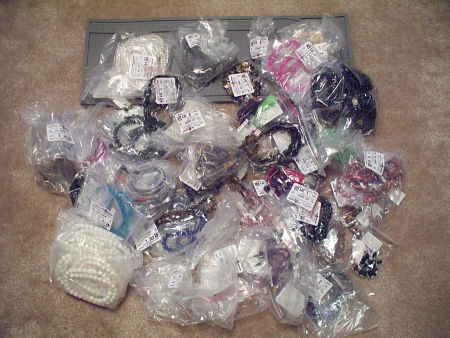
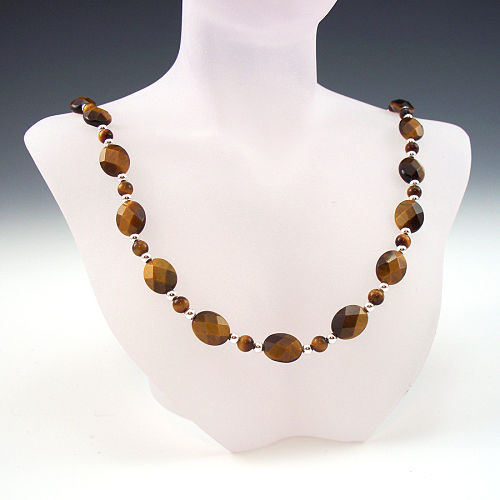
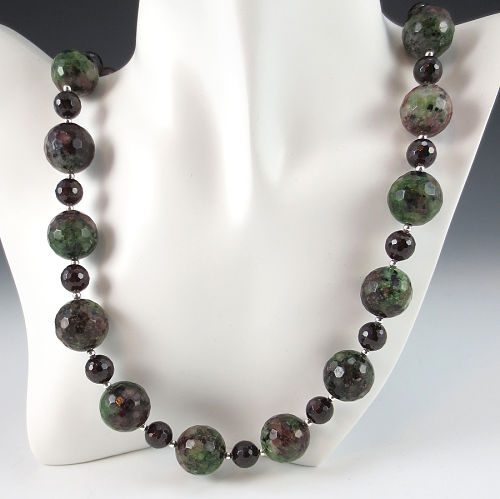
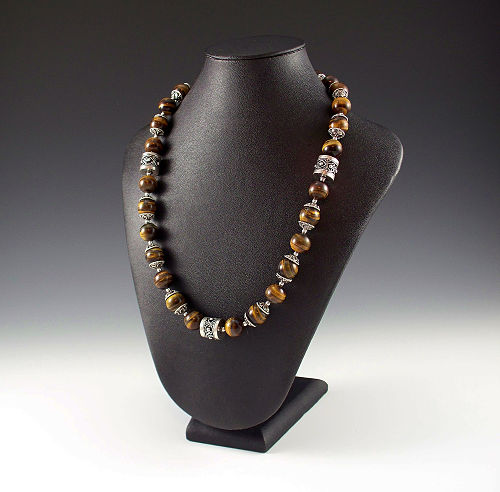
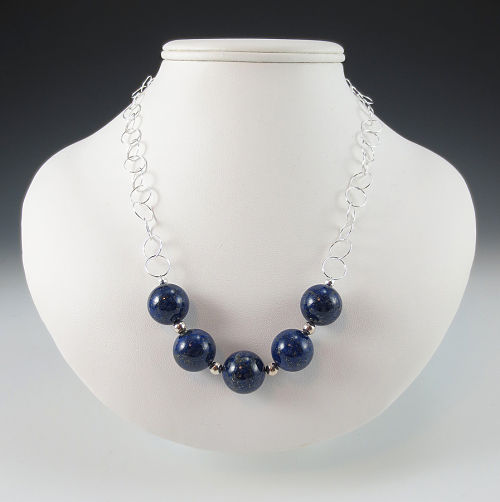
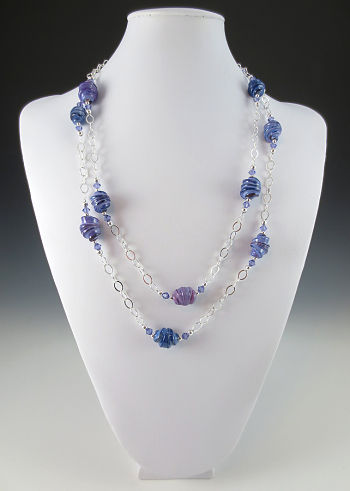
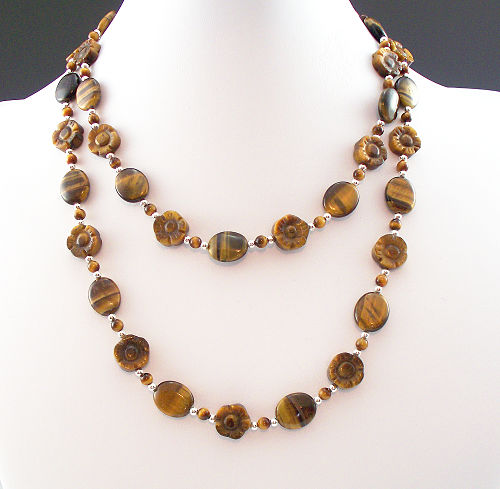


Wonderful post! I love John’s designs and it’s great to get in inkling of his creative process. When I used to make wholesale jewelry for Overstock, I would have greatly benefited from following his amazing design planning. It’s not as easy to design and produce quality & timely designs — John just makes it look easy!
John has great ideas about how to approach a market, and they serve him well! I was very pleased that he agreed to share with us.
I loved this article thank you for the incite!
As our company works through our early collection growing pains, posts like this give great insight to our future endeavors and planning. Thanks for sharing.
Hi, I would like to know if a collection can just consist of earrings or of necklaces. Or is it entirely up to me?
Although a collection is often a suite – including bracelets, necklaces, earrings, etc. your own line is entirely up to you. A collection should all go together in a signature style and obviously be the work of the same maker.
Thank you for sharing this very valuable information was very helpful. I recently started to think about designing collections. What is a reasonable amount of pieces to start out making. I’m learning to use one or two techniques, I’m use to making a lot of different styles all the time, it’s has been a challenge for me, deciding 1-2 techniques. I do have a better gauge now for time frames.
Patricia, thanks for your comment. I always suggest that artists have a collection of at least several dozen pieces to present. You need enough to make an impact. The collection should be cohesive, and and recognizable as your work, with elements of design running through it. When you show too many techniques and styles, it is confusing for the viewer. They may even wonder if you have settled on what you really want to do.